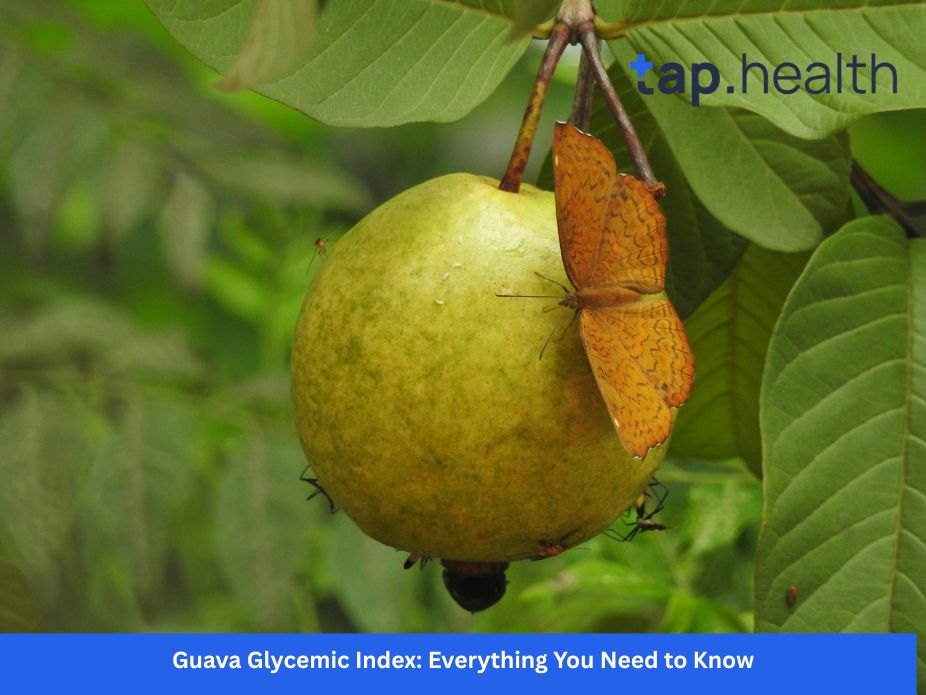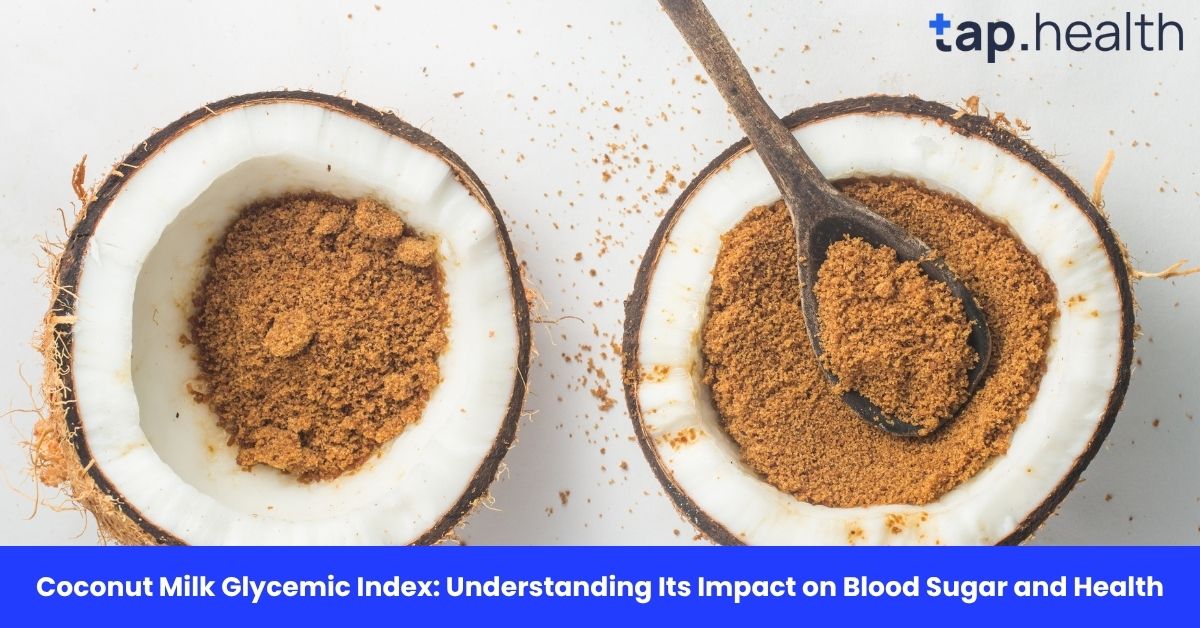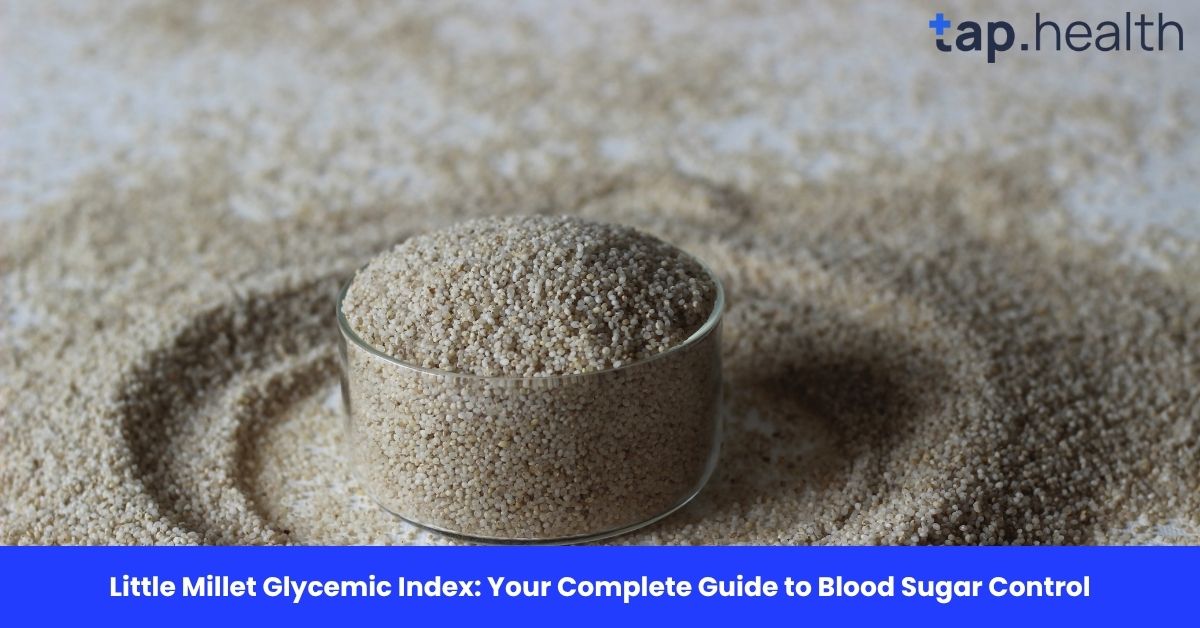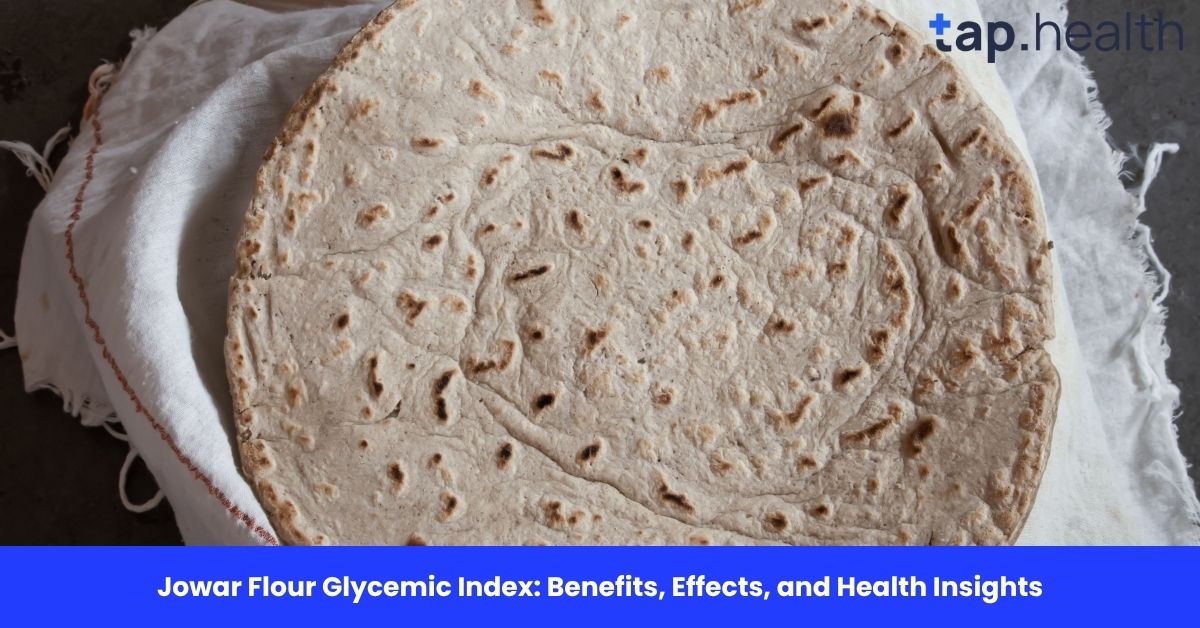Guava is a popular tropical fruit, beloved for its sweet-tangy flavour and nutritional benefits. But for those keeping an eye on their blood sugar levels, a common question arises: What is the glycemic index (GI) of guava, and how does it affect your health?
In this comprehensive guide, we’ll explore everything you need to know about guava’s glycemic index (GI) and glycemic load (GL), how it compares to other fruits, and why it’s an excellent option for managing blood sugar levels. Whether you’re diabetic, pre-diabetic, or simply health-conscious, this article breaks down the science in simple terms, helping you make informed choices.
What is Glycemic Index (GI)?
Before we dive into guava, it’s essential to understand glycemic index. The GI is a scale that ranks carbohydrate-containing foods based on how quickly they raise blood sugar levels after consumption. Foods with a high GI cause rapid spikes in blood sugar, while low GI foods lead to slower, more gradual increases.
- Low GI: 55 or less
- Medium GI: 56–69
- High GI: 70 or more
For instance, white bread has a GI of around 70, while broccoli has a GI of about 15. The lower the GI, the slower the food is digested and absorbed, which can help manage blood sugar levels more effectively, especially for people with diabetes.
Guava Glycemic Index: Is Guava Low GI?
The glycemic index of guava is consistently reported as low. While values can vary slightly based on the type of guava and ripeness, the GI of guava typically ranges from 25 to 31, making it a low-GI fruit.
Why Does Guava Have a Low GI?
Guava is rich in dietary fibre and pectin, which helps slow down the digestion process and the absorption of sugars. This results in a more gradual increase in blood sugar compared to other high-GI foods like white rice or potatoes. Additionally, guava’s natural sugar content is balanced by its high water content, which further reduces the rate of sugar absorption.
What is Glycemic Load (GL) of Guava?
While the glycemic index measures how quickly a food raises blood sugar, glycemic load (GL) takes into account the portion size of the food. A food’s GL is calculated using its GI and the amount of carbs in a typical serving.
How to Calculate GL
The formula for GL is:
GL = (GI × available carbs per serving) ÷ 100
For 100g of guava, we can calculate:
- GI of guava ≈ 31
- Carbs in 100g guava = ~14g
- Fibre in 100g guava = ~5g (subtract from total carbs, leaving 9g of available carbs)
So, the GL of guava per 100g = 31 × 9 ÷ 100 = 2.8 (very low)
This means that guava has a very low GL, making it an excellent choice for those monitoring their blood sugar levels, particularly diabetics.
Guava: A Nutrient-Rich Powerhouse
Besides its low glycemic index, guava packs a punch in the nutrition department:
- High in Vitamin C: A single guava provides more than 200% of the daily recommended intake of Vitamin C, which boosts immunity and supports healthy skin.
- Rich in Fibre: With about 5g of dietary fibre per 100g, guava promotes digestive health, helps prevent constipation, and supports weight management by increasing satiety.
- Good for Heart Health: Guava contains antioxidants like lycopene, which can help reduce the risk of heart disease by improving cholesterol levels and reducing inflammation.
Additionally, guava contains other important vitamins and minerals like vitamin A, potassium, and folate. The combination of these nutrients contributes to its health benefits and its role in stabilising blood sugar levels.
Is Guava Good for Diabetics?
Yes, guava is an excellent fruit for diabetics. The low GI and GL of guava make it an ideal choice for managing blood sugar levels. Guava’s high fibre content helps regulate blood glucose by slowing the absorption of sugar into the bloodstream. Additionally, its rich vitamin C content helps support immune function, which is especially beneficial for people with diabetes, who are more susceptible to infections.
How to Include Guava in Your Diabetic Diet
- Consume whole fruit: Always opt for whole guava rather than guava juice, as the juice lacks the fibre necessary to slow sugar absorption.
- Portion control: One small guava (100–120g) per meal is typically a good portion for most people with diabetes. You can enjoy guava in your diet without worrying about large spikes in blood sugar if you stick to moderate portions.
- Pair with protein: Combine guava with a source of protein, such as nuts, yogurt, or paneer, to further reduce the rate of glucose absorption.
By following these guidelines, guava can be a delicious and healthy addition to your diabetic meal plan.
Guava vs Other Fruits: How Does It Compare?
Guava stands out among tropical fruits for its low glycemic index and rich nutrient profile. Let’s compare guava’s GI with some common fruits:
- Guava: GI ~31
- Apple: GI ~38 (still low, but higher than guava)
- Banana: GI ~51 (medium GI, can cause faster glucose rise)
- Mango: GI ~51 (medium GI, varies based on ripeness)
- Watermelon: GI ~72 (high GI, but low GL due to water content)
Guava is in the lower GI category, along with apples and pears, which makes it a better option for those managing blood sugar compared to medium-GI fruits like bananas and mangoes.
Guava: The Best Way to Consume for Diabetics
While guava is great for diabetics, how you consume it can influence its impact on blood sugar levels. Here are some tips to make the most out of guava:
- Eat the skin: The skin of guava contains additional fibre and nutrients that help slow down sugar absorption.
- Avoid guava juice: Guava juice lacks fibre, and it can cause blood sugar spikes. Whole guava is always the better choice.
- Pair with a healthy fat or protein: For example, a guava and roasted chana or guava with nuts can help balance the glycaemic response.
Myths vs Facts About Guava and Blood Sugar
- Myth: “Guava is too sweet for diabetics.”
Fact: Guava has a low GI and low GL, making it a healthy fruit option for diabetics when consumed in moderation. - Myth: “Fruit juice is just as good as whole fruit.”
Fact: Whole guava is better due to its high fibre content, which helps control glucose release. Juices can lead to faster sugar spikes.
Key Takeaways
- Guava is a low-GI fruit with a GI of around 31, which makes it a healthy choice for those with diabetes or anyone managing blood sugar.
- Glycemic load (GL) for a typical serving of guava is very low, ensuring that it does not cause sharp spikes in blood glucose.
- Guava is packed with vitamin C, fibre, and antioxidants, contributing to overall health and supporting blood sugar regulation.
- Always eat whole guava rather than drinking the juice, as the fibre in the whole fruit helps slow down the absorption of sugar.
FAQs on Guava Glycemic Index
What is the glycemic index of guava?
Guava has a low glycemic index, typically around 31, making it a good choice for stabilising blood sugar levels.
Is guava good for diabetics?
Yes, guava is an excellent fruit for diabetics due to its low GI, high fibre content, and nutrient density. It helps regulate blood sugar levels when eaten in moderation.
How many guavas can a diabetic eat in a day?
A diabetic can consume one small–medium guava (about 100-120g) a day. You can pair it with protein or healthy fats for better glucose control.
Is guava juice good for diabetics?
No, guava juice is not recommended for diabetics because it lacks fibre and can cause a rapid increase in blood sugar. It’s better to eat whole guava.
Which fruit is best for blood sugar control?
Fruits like guava, apples, berries, and pears are good for blood sugar control because of their low GI and high fibre content.
Can guava help with weight loss?
Yes, guava is a great fruit for weight loss due to its low calorie content, high fibre, and ability to promote satiety, keeping you fuller for longer.
Guava is a delicious, nutritious, and blood-sugar-friendly fruit that can be easily included in a healthy diet. Its low glycemic index, combined with its rich vitamin and fibre content, makes it a perfect choice for anyone looking to keep their blood sugar stable while enjoying a tasty treat.



